Over 66 million years ago, the oceans of the Late Cretaceous period were home to the Mosasaurus. This extinct group of aquatic squamate reptiles (the largest order of reptiles) roamed the seas approximately 82 to 66 million years ago. With an estimated length of up to 13 meters for the largest specimen, these creatures were the ocean’s apex predators. Mosasaurus had powerful jaws, strong swimming paddles, and a tail optimized for propulsion in the marine environment. This introduction to Mosasaurus sets the stage for exploring the creature’s discovery, anatomy, and role in its prehistoric ecosystem.
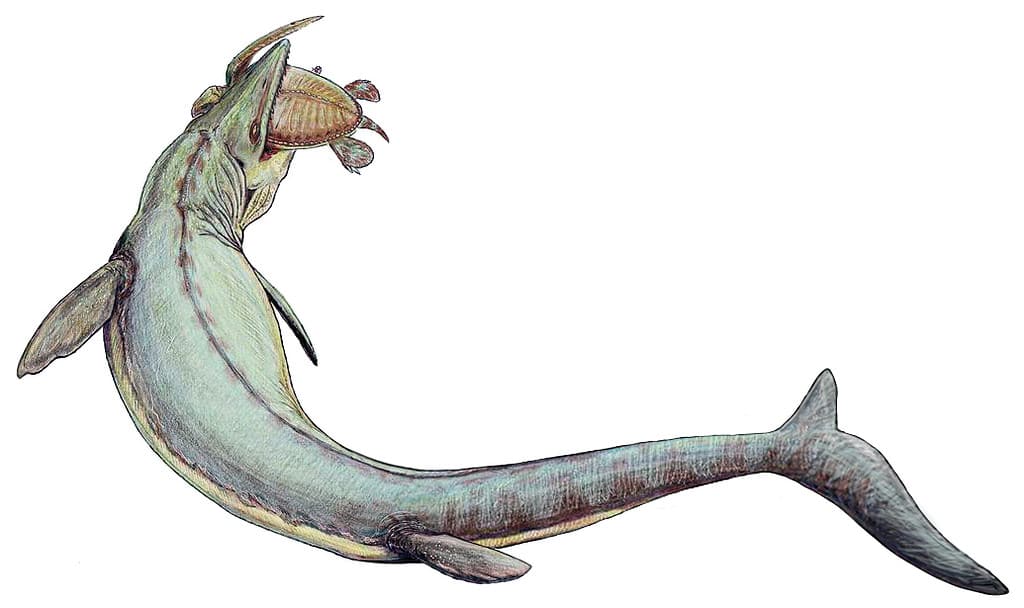
Discovery and Naming
The first known Mosasaurus fossil, a skull, emerged from a Dutch chalk quarry near Maastricht in 1764. The skull was initially believed to have belonged to a whale. This finding and subsequent discoveries ignited curiosity but also confusion among scientists, as the true nature of these fossils remained elusive until the early 19th century.

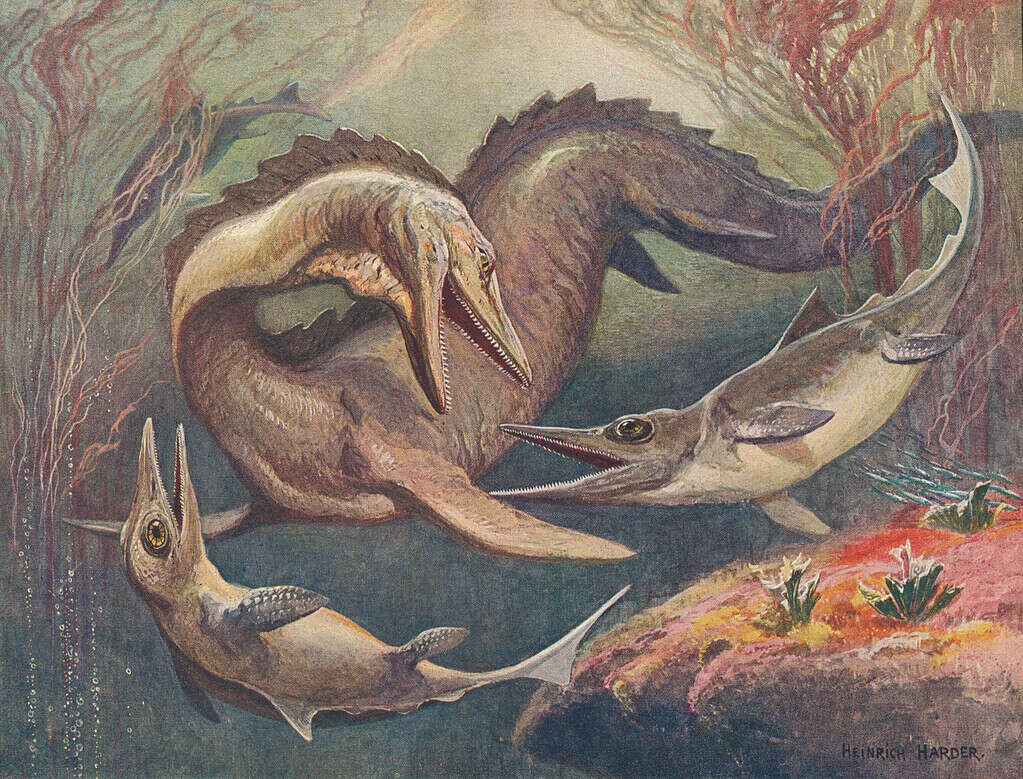
In 1808, French naturalist Georges Cuvier wrote that these remains belonged to a previously unknown marine lizard. This new animal was clearly distinct from any contemporary species. Cuvier’s work on Mosasaurus contributed significantly to defining extinction as a scientific fact, challenging the prevailing view that all species were unchanging and eternal. The genus Mosasaurus was officially classified in 1822 by William Daniel Conybeare. The ancient marine reptile’s name is derived from the Meuse River (Latin: Mosa) near the discovery site and the Greek word for lizard, ‘saurus’.
Anatomy and Appearance
Mosasaurus featured a streamlined body specialized for aquatic life. Its skull sported a set of powerful jaws, filled with sharply pointed teeth capable of tearing into the flesh of its prey. Large, forward-facing eyes offered Mosasaurus a significant advantage in the dimly lit marine environments it inhabited. Such visual acuity would have been vital for identifying prey. Contrasting with its keen eyesight, Mosasaurus‘ sense of smell was diminished.

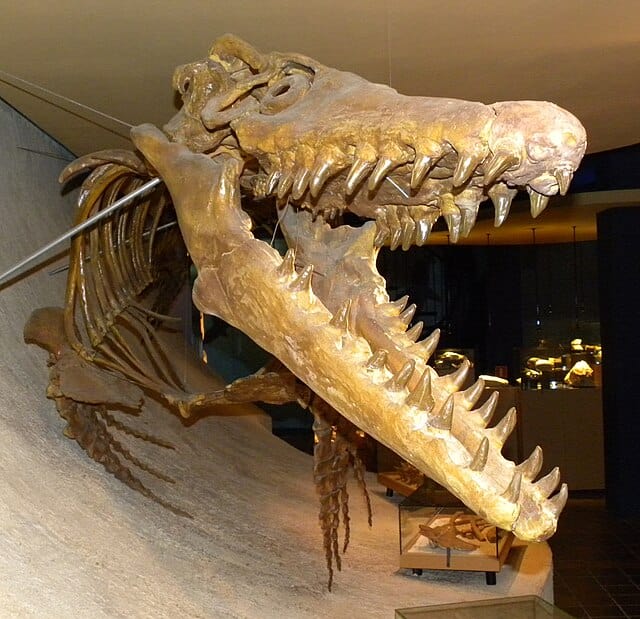
The evolution of its limbs into flippers showcased a complete transition to aquatic life. Mosasaurus‘ tail, ending in a bi-lobed fluke, was a crucial adaptation for providing the thrust needed for its agile thrusts through the water. This feature, reminiscent of modern-day marine mammals, suggests that Mosasaurus engaged in speed bursts to ambush prey.
Mosasaurus may have been warm-blooded, indicating a physiology that could support a high level of activity. This also enabled it to inhabit various marine environments, from warm tropical waters to cooler temperate seas. Unlike most reptiles that lay eggs, evidence suggests that Mosasaurus gave live birth to fully formed young. This viviparous reproduction strategy is a significant adaptation that eliminated the need to return to land to lay eggs.

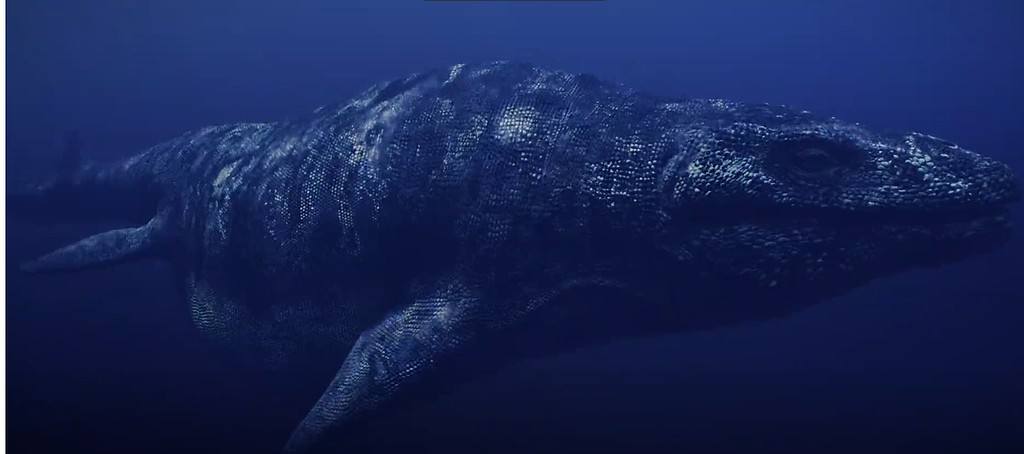
Viviparity would have allowed Mosasaurus populations to spread from shallow coasts to the open ocean. This reproductive strategy also implies a level of parental investment in offspring survival. As live birth typically involves fewer offspring than egg-laying, parenting increases the chance of offspring reaching maturity. This parenting style also reinforces the notion that Mosasaurus was likely warm-blooded, just like great whites. Maintaining a high metabolic rate and internal body temperature would have provided the stable internal environment necessary for the development of embryos.
Size and Species Variability
The Mosasaurus genus showcases a remarkable spectrum of size and form across its numerous species, each adapted to specific environments. The largest species, M. hoffmannii, was initially estimated to be 17.1 meters long. More recent estimates place it closer to 13 meters based on comprehensive fossil analyses.

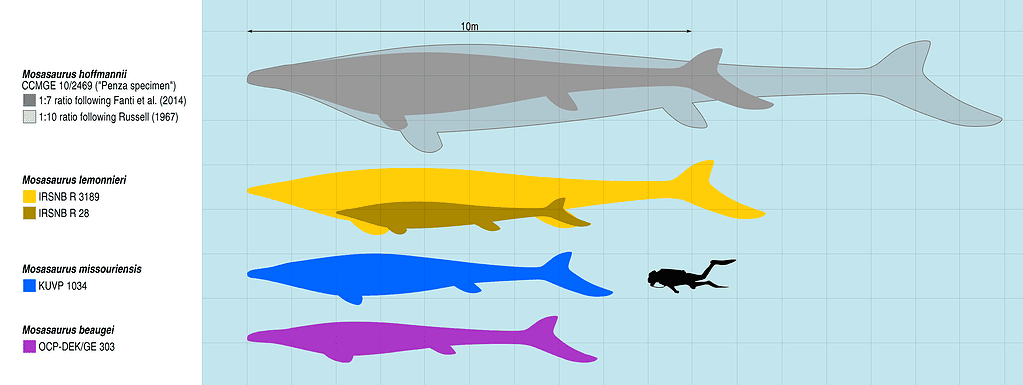
Despite previous attributions of more than fifty species to this genus, recent taxonomic revisions, supported by detailed studies of the type specimen, have streamlined this number. At least five species are now confirmed under Mosasaurus, with ongoing research poised to refine this further. For instance, M. lemonnieri, recognized for its more serpentine body, contrasts with the robust build of M. hoffmannii. Such diversity suggests a range of predatory strategies and dietary preferences, enabling Mosasaurus to occupy various ecological niches within Late Cretaceous seas.

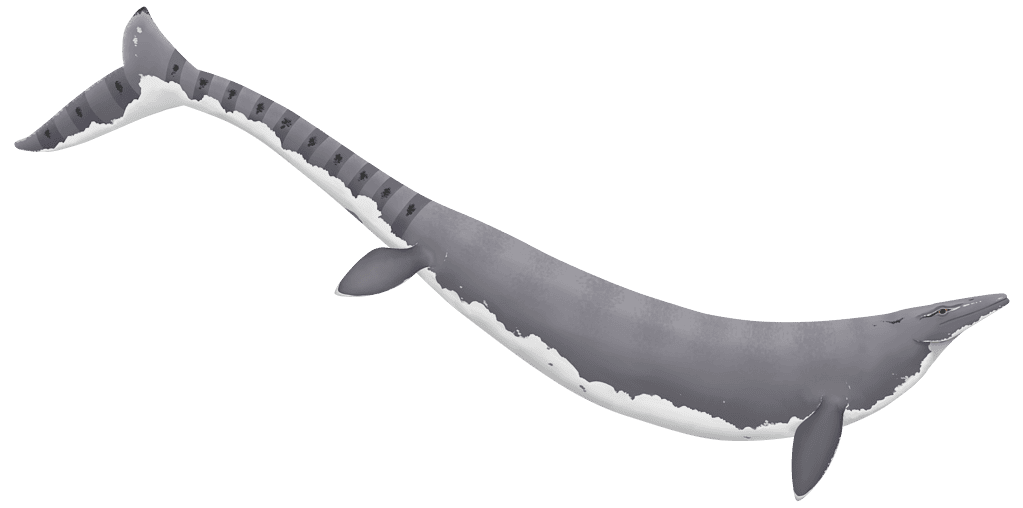
This variability extended to their skulls, from the broad jaws of M. hoffmannii to the slender jaws of M. conodon. While all species bore the powerful jaws and sharp teeth characteristic of the genus, the specific adaptations of each species’ feeding apparatus hint at more complex predator-prey interactions.
Habitat and Distribution
Mosasaurus fossils have been found worldwide, testifying to the genus’ massive success within the Late Cretaceous seas. In North America, fossils were found in the Western Interior Seaway, indicating a preference for extensive inland marine environments. European discoveries suggest its adaptation to the Tethys Ocean‘s varied conditions, extending its habitat from temperate to tropical waters. Further findings were made around Africa and the Middle East. Antarctic fossils reveal that Mosasaurus could even survive in subpolar climates. This wide ecological adaptability once again points to endothermy (warm-bloodedness), allowing it to thrive in diverse marine settings from coastal to open oceanic waters.

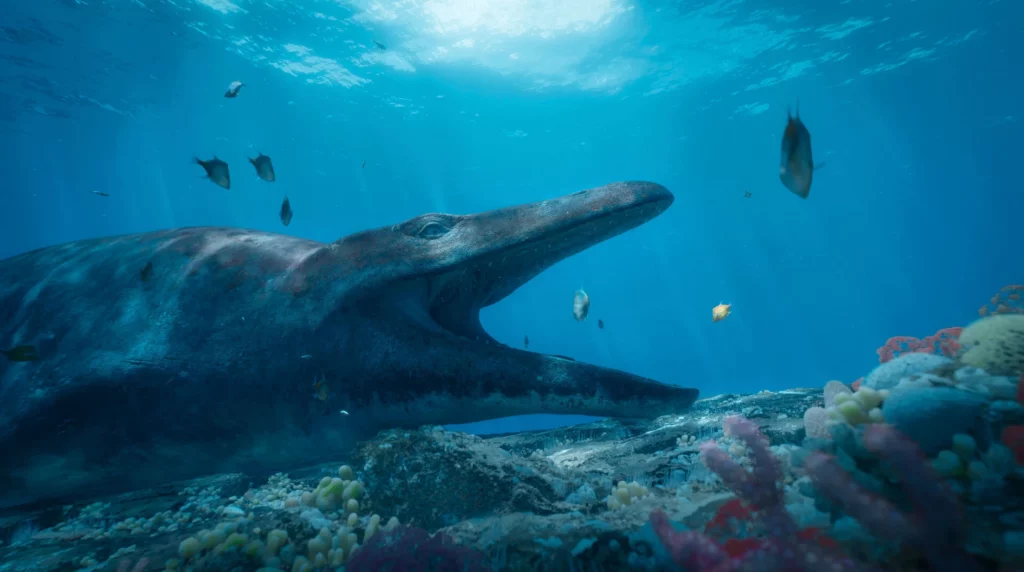
Mosasaurus dominated marine ecosystems across these regions, highlighting its role as a top predator in the global Late Cretaceous oceans. However, it wasn’t all smooth sailing. Mosasaurus must have faced competition from other large mosasaurs, such as Prognathodon and Tylosaurus.
Diet and Behavior
Mosasaurus exhibited diverse dietary habits and sophisticated behaviors to maintain its apex status. Its diet encompassed a wide range of marine life, from fish and sharks to cephalopods and even other mosasaurs. The structure of its jaws and the sharpness of its teeth indicate a capability for both grasping large prey and slicing through the flesh of smaller targets.
This genus likely employed a blend of ambush and pursuit strategies to capture its prey. Its streamlined body and powerful, fluke-ended tail enabled rapid acceleration, making Mosasaurus an adept hunter capable of surprising its prey. Large eyes provided good eyesight, essential for detecting movement in the murky depths or the dim light of the ocean’s surface, compensating for its poor sense of smell.

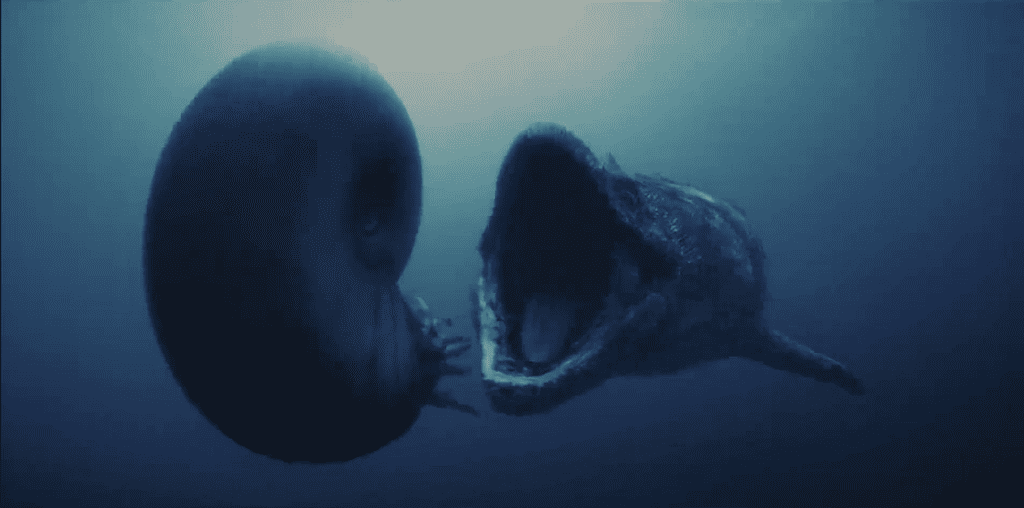
Evidence of intraspecific combat, including healed wounds and fossilized bite marks, suggests that Mosasaurus engaged in territorial disputes or competed for mates. Additionally, Mosasaurus‘ viviparity, giving live birth in open water, points to advanced reproductive behaviors that freed them from the need to return to shore.
Mosasaurus in Popular Culture
The Mosasaurus has made quite a few notable appearances in popular culture. In the “Jurassic World” films, the Mosasaurus steals several scenes with its sheer size and power. Portrayed as a massive aquatic predator, it captivates audiences by leaping out of the water to feed on a fully grown great white shark carcass. This depiction exaggerates its size for dramatic effect.

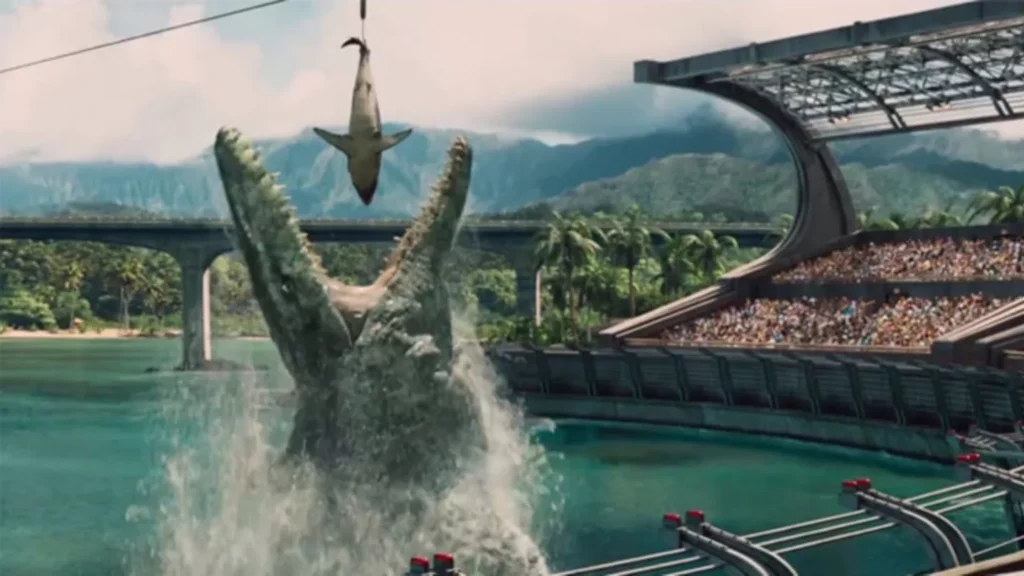
The documentary “Amazing Dinoworld” delves into the evolutionary journey of dinosaurs and their contemporaries, including Mosasaurus. The documentary series “Prehistoric Planet” features the Mosasaurus in a more scientifically grounded context. Through state-of-the-art CGI, the series offers viewers a glimpse into the daily life of Mosasaurus, highlighting its hunting strategies and interactions with other marine animals.
The television series “Primeval” features Mosasaurus in a more sci-fi context, where prehistoric and futuristic creatures breach the present day through anomalies in time. The Mosasaurus episodes feature the creature as it breaches into the present time through one of the anomalies causing havoc in a shipyard.

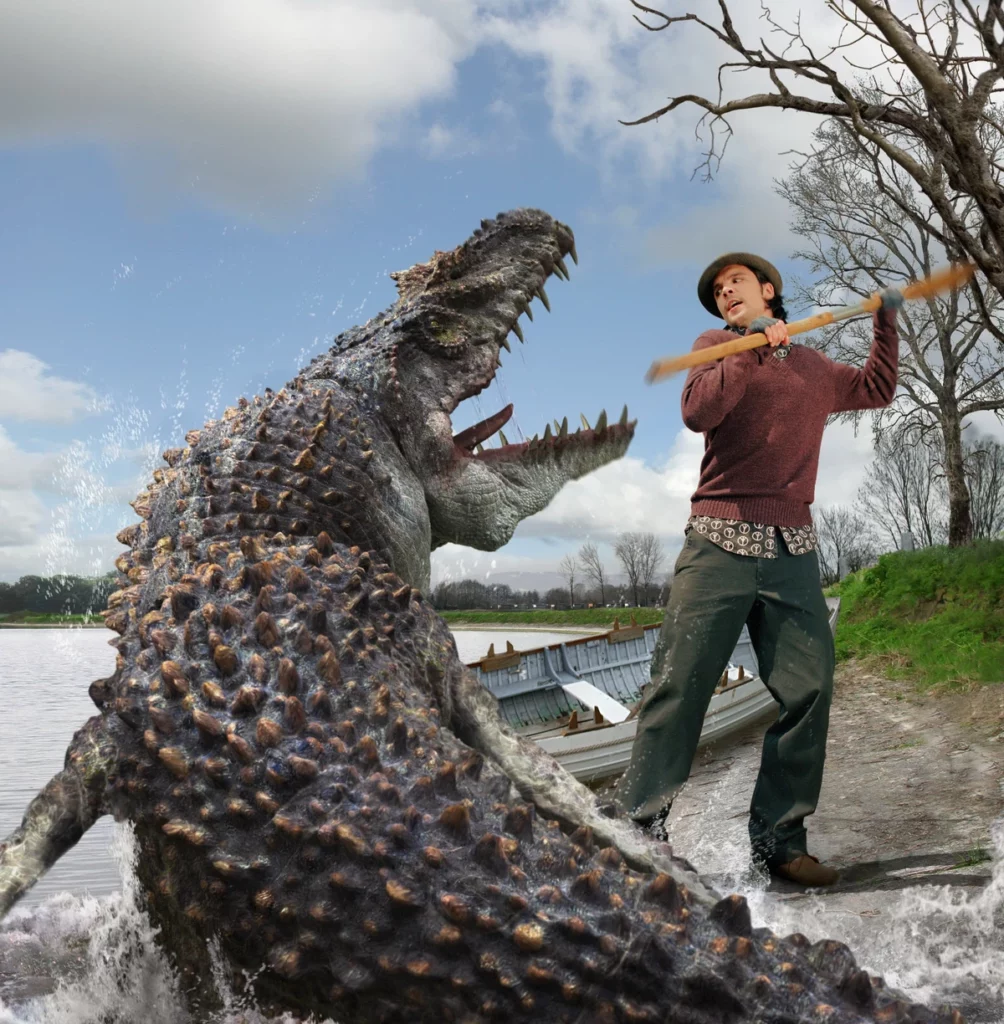
Thanks for your feedback!
